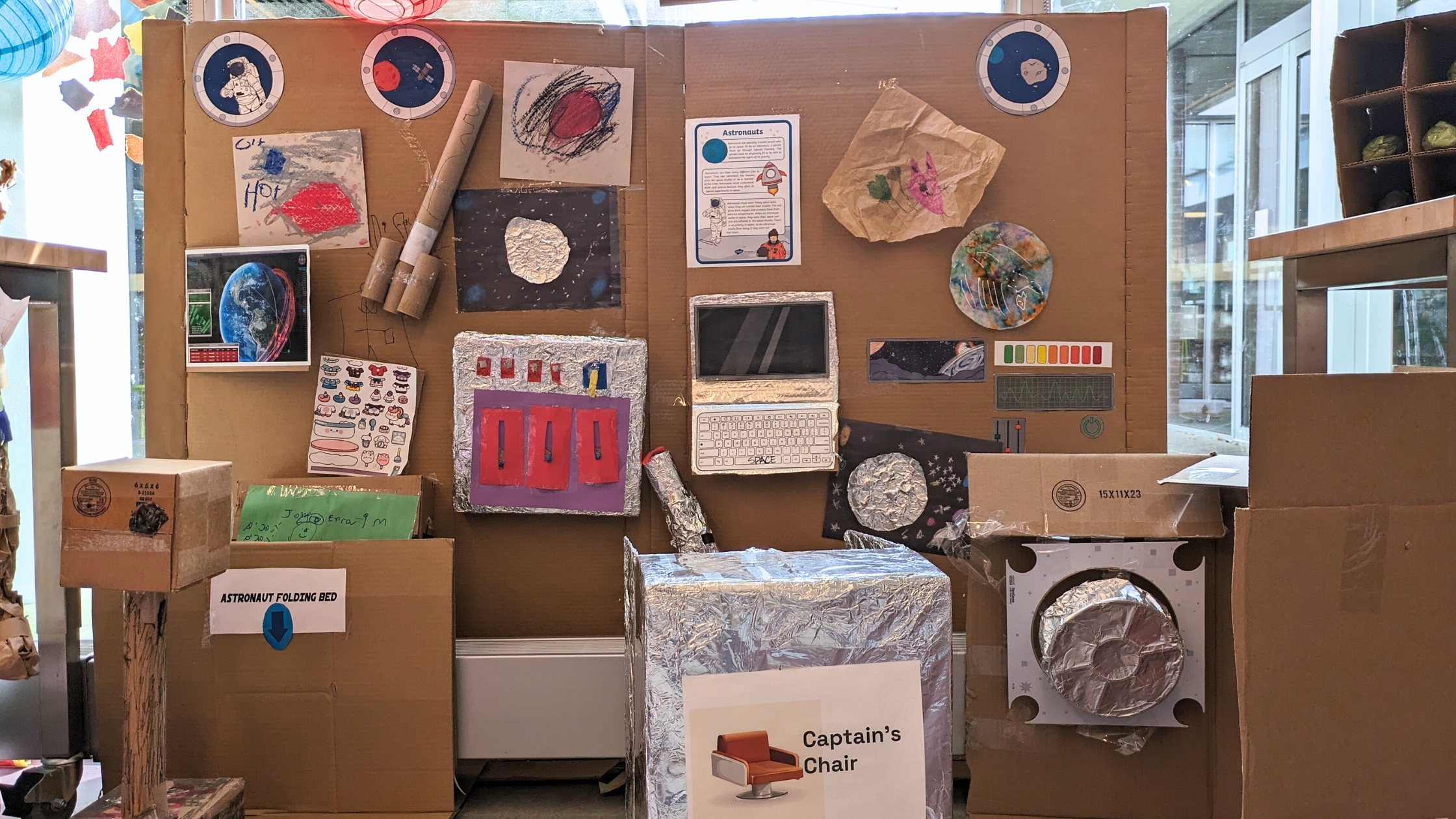Explore Space with the BOOMbox
March 28, 2024

As a lead-up to the total solar eclipse on April 8, the BOOMbox is focused on all things space. We’ve been exploring topics like galaxies, black holes, gravity, star life cycles, constellations, and more. Here are some of our favorite activities for you to try at home.
First, what do we mean by “space”? When we say space, we’re talking about outer space, which is everything that exists beyond Earth. Is the Earth’s moon part of space? Yes! Is that satellite used for GPS navigation by your grown-up’s smartphone part of space? Yes! And so is the sun, which is actually a star, and much, much more.
Even though most things in space are far, far away, we interact with space-related concepts every day. The Earth is one planet within a solar system, and there are many solar systems within the universe. Phew! That’s a lot of space words. NASA’s Space Place glossary is a great tool to look up words that aren’t familiar.
Because space is complicated and uses a lot of space words, we leaned into art projects and beginner experiments to explore really big concepts like planet and star composition, or what makes up these things. Hina and Tonya created two activities to learn more about galaxies, which are clusters of stars, lots and lots of stars held together by gravity.
To learn more about gravity, we tried out a version of a gravity experiment from the Exploratorium and called it gravity races, where we compared the drop rate of two different objects like a ping pong ball versus a feather. We found that we didn’t have the best setup. We think this experiment would be great to try at home using household materials like throw pillows and balled-up socks.
We also leaned into body learning with upcycled engineering activities so we could better understand what it might be like to be an astronaut. Pam designed astronaut training activities that included piecing a puzzle together wearing oversized gloves and walking backwards in a straight line. Pam also led the construction of various spacecraft using cardboard boxes and other recyclables and, with community members, made a BOOMbox Space Station control panel. Do you have cardboard boxes and plastic containers around your home? Then you can make your own space station, too!
Since space is all around us, getting outside can be a great way to explore the beyond. Using Skymaps monthly Sky Calendar you can learn more about the stars and even planets and moons that you can see with your eye at night. For a daytime activity, consider safely viewing the forthcoming total solar eclipse, either at school or at the library’s eclipse viewing party. What’s an eclipse, you ask? An eclipse is when the Earth’s moon and the sun line up. Since the moon is closer, it will appear to block out the sun. But the sun is still there! So you need to use certified eclipse viewing glasses to safely look. The library will be passing out eclipse viewing glasses ahead of the event and NASA has a FAQ page so you can learn more about what the eclipse is and what to expect that day.
We’ve had so much fun taking a deeper dive into space concepts and cannot wait for the eclipse on April 8. We hope you try some of the activities we’ve enjoyed. What will you learn today?